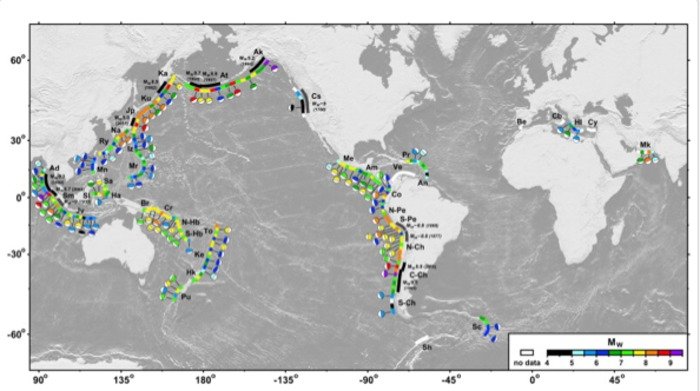Credit: Monash University
MELBOURNE, Dec. 12 (UPI) -- An Australian-led science team says it has developed a new global map of subduction zones that could help predict where giant earthquakes might strike.
The effort, led by Monash University geoscientist Wouter Schellart, has resulted in a guide to which global subduction zones are predicted to be capable of generating giant earthquakes and which ones are not, a university release said Thursday.
The map comes nine years after the giant earthquake and tsunami in Sumatra in December 2004 that devastated the region and many other areas surrounding the Indian Ocean, and killed more than 200,000 people.
Since then two other giant earthquakes have occurred at subduction zones; one in Chile in February 2010 and one in Japan in March 2011, causing massive destruction, killing many thousands of people and resulting in billions of dollars of damage.
The largest earthquakes on Earth only occur at the subduction zones, plate boundaries where one tectonic plate sinks below the other into the Earth's interior.
"The main question is, are all subduction segments capable of generating giant earthquakes, or only some of them?" Schellart said. "And if only a limited number of them, then how can we identify these?"
Schellart and his collaborators used earthquake data going back to 1900 and data from subduction zones to map the main characteristics of all active subduction zones on Earth.
Factors determining whether a zone is capable of generating a large earthquake include deformation in the plate overlying the subduction zone, the level of stress at the subduction zone, the dip angle of the subduction zone, as well as the curvature of the subduction zone plate boundary and the rate at which it moves, they said.
"For the Australian region subduction zones of particular significance are the Sunda subduction zone, running from the Andaman Islands along Sumatra and Java to Sumba, and the Hikurangi subduction segment offshore the east coast of the North Island of New Zealand," Schellart said. "Our research predicts that these zones are capable of producing giant earthquakes."















